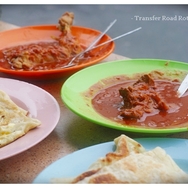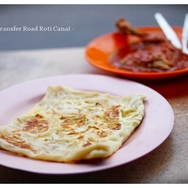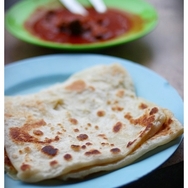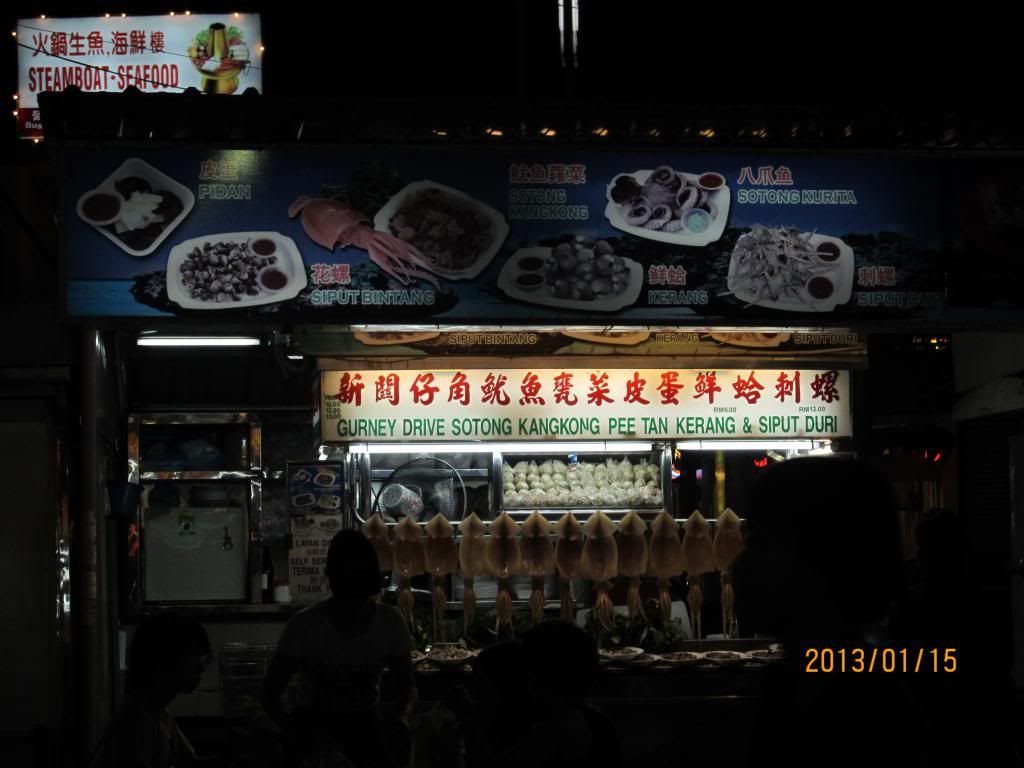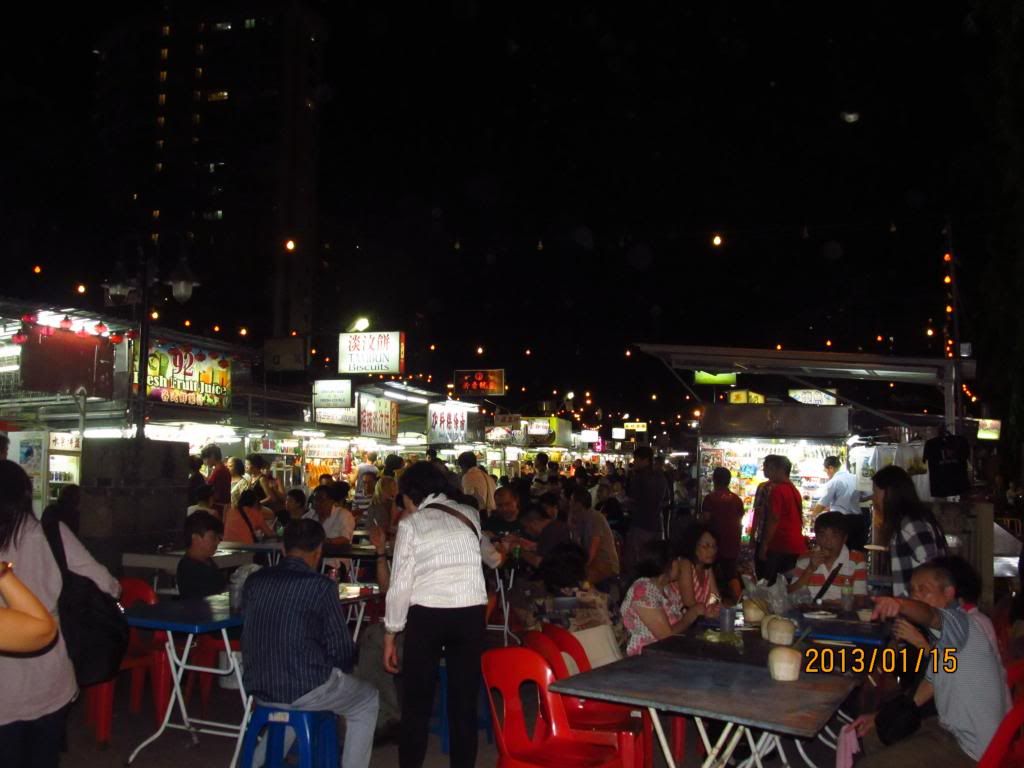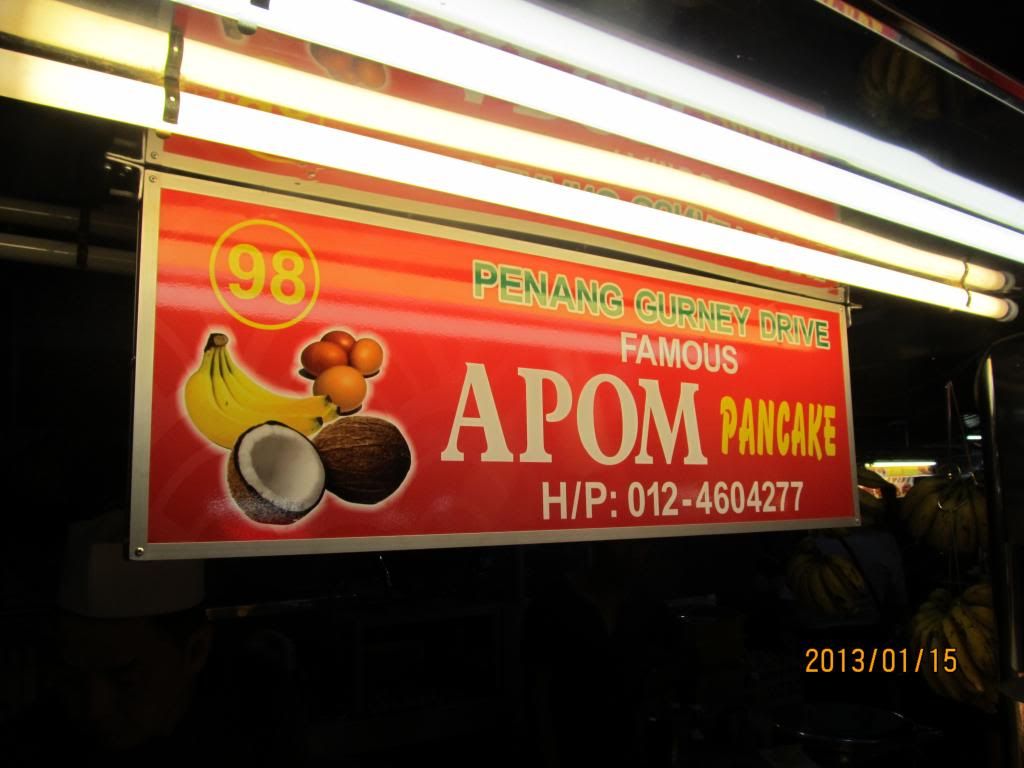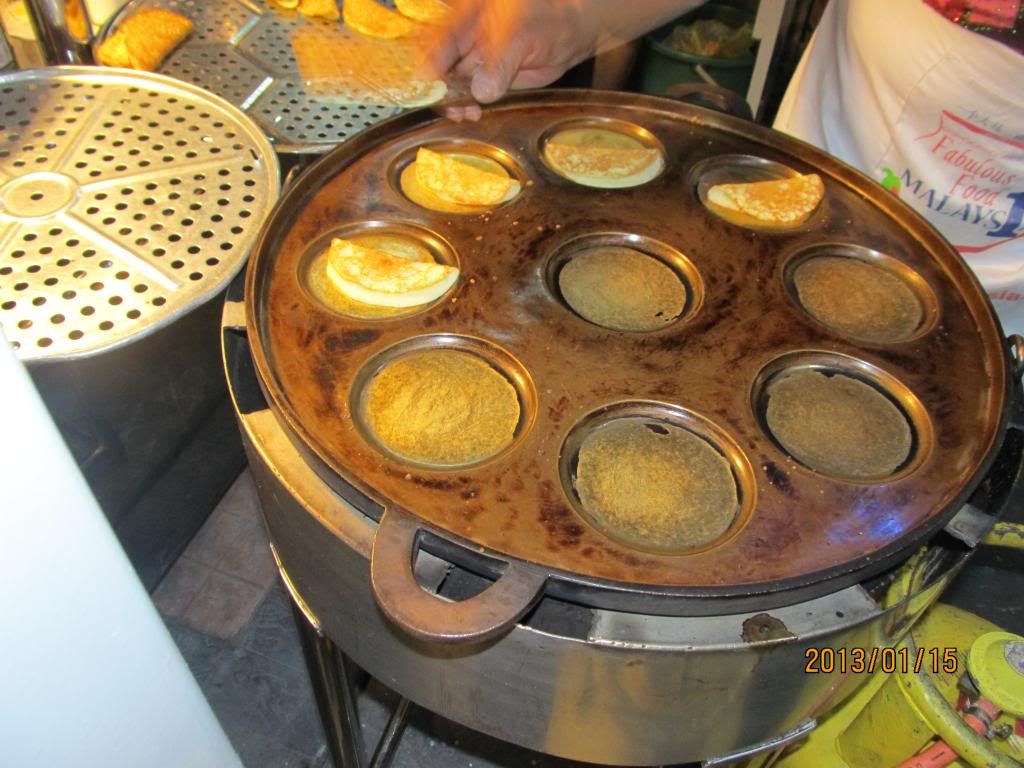sourceSaturday May 5, 2012
Everybody loves apom
BY CHRISTINA CHIN
This local pancake is a modest snack that belies its tough preparation.
APOM is a filling, cheap and tasty breakfast in Penang. For between 50 sen and RM1.40 apiece, the humble local pancake is a snack to be reckoned with.
Be it apom manis, apom tawar or Nyonya apom, they all have one thing in common – you can never stop at one piece.
Perhaps I am biased, having grown up with an apom manis seller as a neighbour, but of the three, this sweet treat is my favourite – especially when served piping hot.
 Good ol’ fashion comfort food: Neelamagam cooks his apom manis the traditional way — in claypots over a charcoal fire. — Photos by Christina Chin
Good ol’ fashion comfort food: Neelamagam cooks his apom manis the traditional way — in claypots over a charcoal fire. — Photos by Christina ChinAs a child, I’d eagerly wait for the elderly couple to come home from their stall down the road, knowing that there would be a few pieces of warm apom manis wrapped in banana leaves for me.
The couple, who have since passed away, were from India and couldn’t speak a word of English but I would sometimes spend hours at their wooden hut watching them get the claypots, charcoal stoves and apom batter ready for the next day. Today, the aromatic smell of the browning batter still lingers in my memory.
R. Neelamagam, 51, is one of only a handful of sellers who still cooks his apom manis the traditional way – in claypots over a charcoal fire.
Each pot weighs more than 1kg and it’s no easy feat “juggling” nine of them. He uses two sticks to help him move the earthen pots around the five charcoal stoves.
Neelamagam says the claypots are difficult to find these days. He stays away from gas stoves as these would cause the pots to crack. He uses 12kg of charcoal daily to cook the tasty snacks.
“If the gas fire is turned down low, it’s all right but it would be impossible to keep up with the orders then.
 The Nyonya apom at Uan Cheng Guan’s stall has sliced bananas and sweet corn in it.
The Nyonya apom at Uan Cheng Guan’s stall has sliced bananas and sweet corn in it.“The charcoal heat is so intense that after about an hour, it gets unbearable and your eyes start to blur.
“I have five children but I don’t want my three girls to slave away for hours over a hot stove – maybe my two boys might be interested,” he shares.
The egg and santan-rich batter amazingly does not stick to the claypot despite the heat. This, he claims, is because of the oil in the coconut milk.
Neelamagam gets help from his cousin at the stall. They make between 400 and 500 pieces daily and more on the weekend.
“Sometimes I’m so tired, I take Mondays off although my official rest day is Thursday,” he says.
Neelamagam took over the stall at the Swee Kong coffeeshop in Pulau Tikus from his brother when he was in his 30s.
The family apom business was inherited from his grandfather and their stall has been around for about 80 years.
 Aisha not only prepares her popular apom tawar but also the curry fish and onion kuah that goes with it.
Aisha not only prepares her popular apom tawar but also the curry fish and onion kuah that goes with it.“My brother was invited to Australia to showcase his apom-making skill and I was recently asked by Pahang royalty to cater for a function in the state.
“Once, a very famous local songstress requested a stack to be brought to her hotel. Our stall has even been featured on popular food programmes.
“It’s quite common for tourists to order as many as 200 pieces at one go,” he says, adding that the stall opens from 6am to 9.30am.
Another apom maker, S. Ravindran, also takes pride in plying the family trade.
The 50-year-old has been manning his stall in Lorong Kucing (five minutes from Neelamagam’s), for 17 years now. Like him, his six siblings are all apom sellers.
However, Ravindran is the only one who still uses the charcoal stove, just as his father did. He maintains that the aroma is more fragrant this way.
While he has remained faithful to his father’s recipe, Ravindran now uses non-stick pans imported from Mumbai instead of the heavy claypots of his father’s generation. With these pans, he doesn’t need to use as much oil.
 Ravindran adds an extra egg to his special apom manis.
Ravindran adds an extra egg to his special apom manis.“We learnt the trade from our father who used to sell apom manis in Waterfall (near the Botanic Gardens). He started this business in 1974 and now all his children are continuing his legacy,” he beams.
Ravindran says despite pricier ingredients, he has never cut back on eggs and santan, “or it just won’t taste the same”.
“I still use banana leaves for takeaways because it adds to the fragrance. Those days when I was a boy, we would just cut the leaves ourselves but now I pay RM3 for a kilo.”
Ravindran’s 15-year-old son has picked up the family trade and helps out at the stall during school holidays.
“Education is important but so is keeping tradition alive. I don’t want the traditional trade of apom-making to die with my generation,” he says.
His wife K. Devi, 42, who helps out at the stall, says it took her three years to learn to manage six pans like Ravindran. When she first started, she could only manage three.
Ravindran’s Penang Famous Apom Manis stall operates from Monday to Saturday from 7am to 1pm.
In the George Town heritage enclave, Aisha Beebi Majid has been operating her modest apom tawar stall for close to two decades. It is a family business passed on from her mother.
Fondly known as “mami” among her regular customers, the 56-year-old’s apom-making art is a dying traditional trade.
Aisha rises at the ungodly hour of 3am every day to prepare the apom tawar mix. This lady with a wicked sense of humour also makes the curry fish and onion kuah (gravy) that goes with the apom tawar, which is made with a batter that is left overnight to ferment.
“My mother used to sell apom tawar at our kampung in Jalan Langkawi and I picked up the skill from her. Now none of my three children wants to carry on the business because they say there are just too many challenges especially in dealing with customers.
“Also, this is a very labour-intensive job – not easy at all. My adopted daughter has shown some interest though, so maybe she may want to take over from me,” she says.
With firm, strong hands that belie her age, Aisha slaves over her hot stoves every day.
“I only take a break once a month and it’s usually on a Monday.
“Work has been a little easier since I changed from charcoal to gas some years ago.”
The charcoal stoves were just too hot, she says.
“Personally, I don’t think it makes a difference to the taste though others may disagree,” she shrugs.
Like the apom manis, an extra egg on the apom tawar adds oomph to the local delicacy.
The difference is that the egg is scrambled into the latter.
Nyonya apom is also a favourite in Penang, and the Uan brothers are arguably the most famous vendors in town.
Both operate stalls side by side along the busy Burmah Road stretch, and each has his own legion of regulars.
Apong (sic) Guan and Apom Chooi are run by Cheng Guan, 62, and his elder brother Cheng Chooi, 69.
Unlike the apom manis and apom tawar, this version has sliced bananas and sweet corn.
The brothers, who between them have close to a century’s worth of apom-selling stories to tell, are said to be on less than cordial terms, but the one thing they have in common is that their apom literally flies off the tray right after it comes off the rows of apom pan griddles.
Before the Nyonya apom even gets a chance to cool, they are carted off by the dozens in little plastic bags.
With the steady stream of local and out-of-state cars pulling up beside the stalls daily, Apong Guan and Apom Chooi are undoubtedly part of Penang’s irresistible lure.


